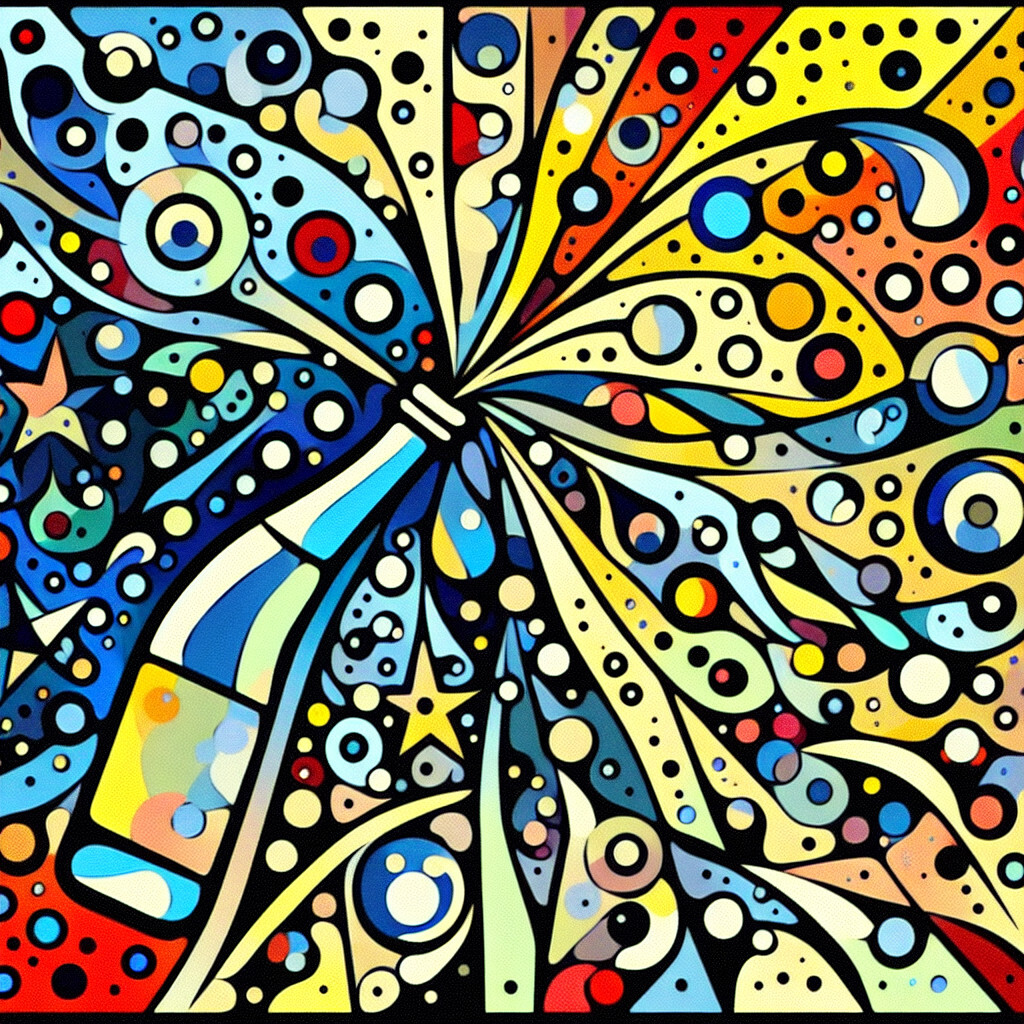-
Table of Contents
“Sparkling Water Fountains: Where Elegance Meets Hydration”
Introduction

Sparkling water fountains are unique installations that combine the aesthetic appeal of a water feature with the refreshing qualities of carbonated water. These fountains are designed to infuse tap water with carbon dioxide, transforming it into sparkling water. They are often found in high-end restaurants, hotels, and public spaces, offering a sustainable alternative to bottled sparkling water. The sight of bubbling water not only adds a visual appeal but also enhances the overall ambiance with the soothing sound of flowing water.
The Health Benefits of Sparkling Water Fountains
Sparkling water fountains, a relatively new phenomenon, are rapidly gaining popularity in various parts of the world. These fountains, which dispense carbonated water, are not just aesthetically pleasing but also offer a myriad of health benefits. This article aims to shed light on the health advantages associated with the consumption of sparkling water from these fountains.
Firstly, sparkling water is a refreshing alternative to still water and can help to increase your daily water intake. Many people struggle to consume the recommended eight glasses of water per day, often citing the lack of taste as a deterrent. Sparkling water, with its effervescence and slightly tangy flavor, can make hydration more enjoyable. Consequently, this can lead to better hydration, which is essential for maintaining optimal bodily functions, including digestion, nutrient absorption, and temperature regulation.
Moreover, sparkling water can aid in digestion. Studies have shown that the carbonation in sparkling water can help to alleviate symptoms of indigestion and constipation. The bubbles in the water stimulate the release of gastric enzymes, which can expedite the digestion process. Additionally, the increased pressure in the stomach can promote a feeling of fullness, which can be beneficial for those trying to control their calorie intake.
Furthermore, sparkling water can be a healthier substitute for sugary drinks. With the rise in obesity and diabetes, health experts are encouraging people to cut down on their consumption of sugary beverages. Sparkling water, with its bubbly texture and refreshing taste, can satisfy the craving for fizzy drinks without the added sugars and calories. This can be particularly beneficial for those trying to lose weight or maintain a healthy weight.
However, it’s important to note that not all sparkling waters are created equal. Some brands may add sugars, artificial sweeteners, or other additives to their sparkling water, which can negate some of the health benefits. Therefore, it’s crucial to read the labels and choose sparkling water that is free from these additives.
In addition to the health benefits, sparkling water fountains also have environmental advantages. Traditional bottled sparkling water contributes to plastic waste, which is a significant environmental concern. On the other hand, sparkling water fountains, especially those that allow users to fill their own reusable bottles, can help to reduce plastic waste. This makes them a more sustainable choice for those looking to minimize their environmental impact.
In conclusion, sparkling water fountains offer a refreshing and healthy alternative to still water and sugary drinks. They can help to increase hydration, aid in digestion, and serve as a low-calorie substitute for fizzy drinks. However, it’s important to choose sparkling water that is free from added sugars and other additives to reap these health benefits. Additionally, these fountains can contribute to environmental sustainability by reducing plastic waste. Therefore, the rise in popularity of sparkling water fountains is not just a trend, but a move towards healthier and more sustainable living.
Innovative Designs of Sparkling Water Fountains
Sparkling water fountains, a relatively new concept in the realm of public utilities, are rapidly gaining popularity due to their innovative design and functionality. These fountains are not just aesthetically pleasing but also serve a practical purpose, providing a refreshing alternative to still water. They are a testament to the evolving landscape of public amenities, reflecting a shift towards sustainability and health-conscious choices.
The concept of sparkling water fountains originated in Europe, particularly in Italy, where the culture of drinking sparkling water is deeply ingrained. The Italian government, recognizing the environmental impact of plastic waste from bottled water, introduced these fountains as a sustainable alternative. The idea quickly caught on, and today, sparkling water fountains can be found in public spaces across the globe.
The design of sparkling water fountains is a blend of modern technology and traditional aesthetics. They are typically made of stainless steel or stone, with sleek lines and minimalist design elements that blend seamlessly into the urban landscape. The fountains are equipped with carbonation systems that infuse tap water with carbon dioxide to create sparkling water. Some models also have built-in filtration systems to ensure the water is clean and safe to drink.
One of the most innovative features of sparkling water fountains is their ability to provide chilled sparkling water. This is achieved through a refrigeration system that cools the water before it is carbonated. This feature is particularly appreciated in hot climates, where a cold drink of water can be a welcome relief.
Another notable feature of sparkling water fountains is their user-friendly interface. Most models have easy-to-use push-button controls that allow users to choose between still and sparkling water. Some high-end models even offer different levels of carbonation, catering to individual preferences.
The installation of sparkling water fountains in public spaces has numerous benefits. Firstly, they promote hydration by providing a refreshing alternative to sugary drinks. This aligns with global efforts to combat obesity and other health issues related to poor diet. Secondly, they reduce plastic waste by eliminating the need for single-use plastic bottles. This is a significant step towards sustainability, given the environmental impact of plastic pollution.
Moreover, sparkling water fountains can also contribute to a sense of community. They serve as gathering points where people can pause, refresh, and interact. This social aspect is often overlooked but is an integral part of the design and function of these fountains.
In conclusion, sparkling water fountains represent a significant advancement in the design of public amenities. They combine aesthetics, functionality, and sustainability in a way that reflects the evolving needs and values of society. As these fountains become more commonplace, they are likely to inspire further innovation in the design of public spaces, making our cities more livable and sustainable.
The Role of Sparkling Water Fountains in Modern Architecture
Sparkling water fountains have emerged as a significant element in modern architecture, adding a touch of elegance and sophistication to both indoor and outdoor spaces. These fountains, which are often characterized by their dynamic water displays and mesmerizing light effects, play a crucial role in enhancing the aesthetic appeal of a structure, while also contributing to its functional aspects.
The integration of sparkling water fountains into modern architectural designs is largely driven by the desire to create visually appealing spaces that captivate the senses. The cascading water, coupled with the shimmering light effects, creates a spectacle that is both enchanting and soothing. This not only enhances the visual appeal of the space but also creates a serene and tranquil environment that promotes relaxation and well-being.
Moreover, sparkling water fountains are not just about aesthetics. They also serve a functional purpose. The sound of flowing water has a calming effect, which can help to reduce stress and promote a sense of peace and tranquility. This makes sparkling water fountains an ideal addition to spaces such as office buildings, where they can help to create a more relaxed and productive work environment.
In addition to their aesthetic and functional benefits, sparkling water fountains also contribute to the sustainability of a building. These fountains can serve as a natural humidifier, helping to maintain a comfortable indoor climate while reducing the need for artificial air conditioning. Furthermore, the water used in these fountains can be recycled, which helps to conserve water and reduce the environmental impact of the building.
The versatility of sparkling water fountains also makes them a popular choice in modern architecture. These fountains can be customized to fit any space and can be designed in a variety of styles, from traditional to contemporary. This allows architects and designers to incorporate these fountains into a wide range of architectural styles, adding a unique touch to each project.
The use of technology has further enhanced the appeal of sparkling water fountains in modern architecture. Advanced lighting techniques, such as LED lights, can be used to create stunning light effects that enhance the visual appeal of the fountain. Similarly, automated control systems can be used to control the flow of water, allowing for dynamic water displays that can be adjusted to suit different moods and settings.
In conclusion, sparkling water fountains play a significant role in modern architecture, contributing to both the aesthetic and functional aspects of a building. These fountains, with their captivating water displays and mesmerizing light effects, add a touch of elegance and sophistication to any space. At the same time, they create a serene and tranquil environment that promotes well-being, making them an ideal addition to a wide range of spaces. Furthermore, their sustainability and versatility make them a popular choice in modern architectural designs. With the use of technology, the possibilities for incorporating sparkling water fountains into modern architecture are virtually limitless, promising exciting prospects for the future.
Environmental Impact of Sparkling Water Fountains
Sparkling water fountains, a relatively new phenomenon, are rapidly gaining popularity in various parts of the world. These innovative installations are not only aesthetically pleasing but also offer a refreshing alternative to still water. However, as with any new technology, it is essential to consider the environmental impact of sparkling water fountains.
The production of sparkling water involves the injection of carbon dioxide into still water under high pressure. This process, known as carbonation, gives the water its characteristic fizz. While carbon dioxide is a naturally occurring gas, its excessive release into the atmosphere contributes to global warming. Therefore, the carbonation process used in sparkling water fountains could potentially have a negative environmental impact.
However, it is important to note that the carbon dioxide used in the carbonation process is often captured as a byproduct of other industrial processes, rather than being produced specifically for this purpose. This means that the carbon dioxide would have been released into the atmosphere anyway, and using it in sparkling water fountains can be seen as a form of recycling. Furthermore, the amount of carbon dioxide released by a sparkling water fountain is relatively small compared to other sources of greenhouse gas emissions.
Another environmental consideration is the potential for water wastage. Sparkling water fountains, like their still water counterparts, need to be regularly cleaned and maintained to ensure they are safe and hygienic. This process can involve a significant amount of water, which could contribute to water scarcity in areas where this is already a concern. However, many sparkling water fountains are designed to be water-efficient, and regular maintenance can actually help to prevent water wastage by ensuring the fountain is working correctly.
The use of sparkling water fountains can also have positive environmental impacts. For example, they can help to reduce the consumption of bottled water, which is a significant source of plastic waste. Many people prefer sparkling water to still water, and having access to a sparkling water fountain can encourage them to refill a reusable bottle rather than buying a new one. This can help to reduce the amount of plastic waste that ends up in our oceans and landfills.
Moreover, sparkling water fountains can also contribute to energy conservation. Traditional methods of producing sparkling water involve cooling the water to a low temperature before carbonation, which requires a significant amount of energy. However, many sparkling water fountains use a process known as cold carbonation, which can be done at room temperature and therefore uses less energy.
In conclusion, while there are some potential environmental concerns associated with sparkling water fountains, these are generally outweighed by the benefits. The use of captured carbon dioxide in the carbonation process, the potential for water and energy conservation, and the reduction in plastic waste all contribute to the environmental sustainability of sparkling water fountains. As with any new technology, it is important to continue monitoring and researching their environmental impact to ensure that they remain a sustainable choice.
Q&A
1. Question: What is a sparkling water fountain?
Answer: A sparkling water fountain is a device that infuses carbon dioxide into water to create sparkling or carbonated water.
2. Question: How does a sparkling water fountain work?
Answer: A sparkling water fountain works by pressurizing carbon dioxide gas and mixing it with water. The pressure forces the gas to dissolve into the water, creating bubbles and giving the water a fizzy texture.
3. Question: Can you use any type of water in a sparkling water fountain?
Answer: Yes, you can use any type of water in a sparkling water fountain, but it’s recommended to use filtered or purified water for the best taste and quality of sparkling water.
4. Question: Are sparkling water fountains safe to use?
Answer: Yes, sparkling water fountains are safe to use. They are designed with safety features to prevent over-carbonation and explosion. However, it’s important to follow the manufacturer’s instructions for use and maintenance.
Conclusion
In conclusion, sparkling water fountains are innovative installations that provide an eco-friendly alternative to bottled sparkling water. They offer a unique, refreshing experience to users, promoting hydration while reducing plastic waste.





